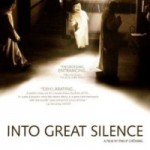This will be at least a three part series exploring the relationship between science and religion.
I am currently taking a course with the renowned Professor John Lennox, who is a guest professor for a summer intensive class at Regent College in Vancouver, BC. Dr. Lennox is Oxford Professor of Mathematics, Fellow in Mathematics and the Philosophy of Science, and he teaches for the Oxford Strategic Leadership Programme at the Executive Education Centre in Oxford’s Said Business School. Though his primary training is in pure mathematics, he is an all around authority on the interface between science, philosophy and religion. He’s a brilliant, witty, jolly Irishman who is both grandfatherishly-soft and ingeniusly-sharp all at once.
EPISTEMOLOGY
I’ve brought a variety of questions to the course and want to develop some of them here. The first question is about epistemology, which is the theory of knowledge or the philosophical line of questioning about knowledge and belief. Etymologically speaking, “epistemology” is derived from the Greek word for knowledge (episteme). I believe episteme is a compound word formed from the preposition epi + verb isteme (Greek words for over + to stand…literally “to stand over”). Epistemology asks: How do we know what we know? What is justifiably required in order to say we have knowledge of a thing?
The popular conception is that science and religion live in two different worlds. Scientific knowledge is in one category, religious knowledge (if we can even call it that) is in another. It is often understood in this way: scientific knowledge is equated with facts, based on empirically verifiable evidence, etc. etc. whereas religious knowledge is equated with faith, based on a personal belief where there happens to be no evidence, etc. etc. Or, science deals in reality; religion deals in fancy.
As we shall soon see, this is an incorrect (and probably pernicious) way of framing the relationship between science and religion and their respective access to knowledge. Consequently, it is a view that any thoughtful person ought not permit – whether she happens to be religious or not.
What I set out to do in this first post is to begin to debunk the myth that religious knowledge is somehow unreasonable by showing that the folks in the Bible do not subscribe to a faith that is devoid of reason.
RICHARD DAWKINS ON FAITH
The supposed absurdity of religious faith is stated, perhaps most famously, by Richard Dawkins in his book The Selfish Gene. Here, Dawkins defines faith in this way: faith “means blind trust, in the absence of evidence, even in the teeth of evidence.” [1] He continues with a brief interaction with the New Testament:
“The story of Doubting Thomas is told, not so that we shall admire Thomas, but so that we can admire the other apostles in comparison. Thomas demanded evidence. Nothing is more lethal for certain kinds of meme than a tendency to look for evidence [the word ‘meme’ was coined by Dawkins and “conveys the idea of a unit of cultural transmission.” It refers to a concept, idea, belief, behavior, etc. that is transmitted from one person to another in a culture). The other apostles, whose faith was so strong that they did not need evidence, are held up to us as worthy of imitation. The meme for blind faith secures its own perpetuation by the simple unconscious expedient of discouraging rational inquiry. Blind faith can justify anything…Memes for blind faith have their own ruthless ways of propagating themselves.” [2]
As his thought has developed (if we can call it that?), he has come to describe religious belief as delusional. In agreement with the dictionary supplied by his word processor, he argues that religious faith is delusional; it is “a persistent false belief held in the face of strong contradictory evidence.” [3]
**Tangent: If you’re interested in seeing the full-length version of the debate between John Lennox and Richard Dawkins, click here.**
I was initially planning on jumping right into comparing the epistemological possibilities of both science and religion but before I do that I feel like I need to address Dawkins’ misunderstanding of faith by showing that neither Thomas nor the rest of apostles exhibit faith as he describes it.
THE BIBLICAL PICTURE OF FAITH
Hopefully you can see there are at least two problems with Dawkins’ conception of faith quoted in The Selfish Gene and The God Delusion. The first is this: I don’t know of any serious Christian who subscribes to this definition of faith or understands his or her faith in this way. In fact, I cannot imagine any serious-minded person of any theistic religion to NOT object to Dawkins’ idea that faith is blind and that it is 1) not based on any sort of evidence that would justify the belief and 2) persists in the face of contrary evidence. This is a serious misunderstanding of “faith.”
The second problem is the biblical illustration he employs in that section of his The Selfish Gene doesn’t actually support his point but, in fact, contradicts it quite strongly! Dawkins reference to Doubting Thomas as he is (perhaps unfortunately) called is from John 20. Let’s have a look at the evidence, shall we?
It would be helpful to read this entire chapter before continuing… go on.
John 20 begins with Mary Magdalene, Simon Peter, and the other disciple visiting Jesus’ tomb on Sunday morning, just two days after they all watched him expire upon the cross. Upon seeing the empty tomb, Mary assumed that his body was taken away – perhaps stolen, who knows? The fact is that Jesus’ dead body was not in the tomb and so she naturally assumed his dead body was simply somewhere else. What is clear is that she saw the evidence – that the tomb was empty – and used her reason to deduce not that Jesus had risen from the dead but someone had taken his body. This is to say, she is a thinking person deducing reasonable conclusions from evidence available to her.
Further, we see that other disciples actively sought out evidence to substantiate claims. When Mary told them the tomb was empty, they ran to the tomb for verification. John tells us that upon seeing the empty grave, the “other disciple” saw and believed. What did he see and believe? He saw and believed Mary’s “rumor” was true. That is, that the grave was indeed empty, NOT that Jesus had been resurrected. He didn’t jump to any wild conclusions. This is clear from John 20:8-9: “Then the other disciple, who had reached the tomb first, also went in, and he saw and believed; for as yet they did not understand the Scripture, that he must rise from the dead.” It’s important to notice that upon seeing the empty tomb, their first conclusion was not to explain the empty tomb by resurrection – they didn’t understand the Scriptures, nor did Jesus pay a personal visit as of yet. The tomb was empty not because Jesus was raised, so they thought, but because someone took his corpse. The may have been uneducated, but they were not stupid.
It’s no surprise to me that they did not immediately think the empty tomb equated to resurrection. For one, they did not understand the Old Testament. For two, it seems utterly reasonable that their initial conclusion was that someone had taken the body – people don’t normally rise from the dead, you see. This simply doesn’t fit Dawkins’ description of folks with blind faith propagating their beliefs contrary to evidence. As the Gospel of John shows, it took remarkable evidence for those closest to Jesus to believe he was resurrected.
BUT WAIT… THERE’S MORE!
What’s even more astounding is Dawkins’ misreading of the text as it relates specifically to Thomas and the other apostles. Again, Dawkins asserts that the purpose of John 20 is that we would read and so admire the other apostles who did not require evidence of the resurrection and see Thomas as a negative example because he demanded evidence. To show this is not the case, we’ll look first at the disciples and then Thomas.
First, the apostles. Jesus’ first post-resurrection appearance was to Mary Magdalene. After seeing the living, breathing, resurrected Jesus, we are told: “Mary Magdalene went and announced to the disciples, “I have seen the Lord”—and that he had said these things to her” (John 20:18). It seems that the disciples weren’t immediately convinced by Mary’s testimony. They, in fact, required more evidence. I base this on two things. First, the apostles had locked themselves away in a house because they were afraid of the Jews. The little detail – that the doors were locked – serves at least two purposes: 1) it highlights the unique properties of Jesus’ resurrection body (we are told that Jesus came and stood among them – which many assume means he didn’t unlock any doors). 2) More importantly for our purposes, it suggests that the disciples did not believe Mary, that Jesus had been resurrected. When the apostles eventually came to be fully convinced of the resurrection, they were no longer afraid of anything – they lived boldly and without fear (see the Book of Acts). Locking themselves away suggests that they needed more evidence of Jesus’ resurrection than Mary’s eyewitness account. What is more, we read in John 20:20 that it was only after the disciples were able to see Jesus’ hands and his side that they recognized him as Jesus (still, the full implications of the resurrection were yet to unfold). In any case, hindsight is 20:20. The point is this: the disciples saw the evidence and believed, not vice versa.
Second, we’ll look at Thomas. On the one hand, it is absolutely true that Thomas doubted and so, in one sense, his nickname fits. On the other, I’m not sure he doubted any more than the other disciples. This is to say that they could all have “doubting” appended to their names. So, this begs the question, the answer to which Dawkins somehow overlooks: why is Thomas called Doubting Thomas? The reason given for Thomas’ doubt is not because he suffered more existential angst, was more of an empiricist, or was simply more skeptical and had a higher bar for justified true belief than his fellow apostles. He is NOT called Doubting Thomas because he required evidence and they did not. Instead, John tells us that Thomas doubted simply because he wasn’t with the rest of the gang when Jesus came (John 20:24-25). They believed because they saw; Thomas reserved belief until he saw. Both are very reasonable positions.
Just as all the disciples needed to see Jesus in the flesh after Mary’s testimony, so Thomas needed to see Jesus for himself after the disciples’ testimony. The faith of all parties involved is absolutely evidence-based. This is the opposite of blind faith: it wasn’t until they literally saw resurrected Jesus in their midst that they believed him to no longer be dead. Their faith that Jesus was who he said was absolutely based on rational inquiry, contrary to what Dawkins asserts.
Summary of FLOW of knowledge acquisition and transfer (need better title)
STANDARD STRUCTURE OF FLOW : 1) Observation > 2) Report/Claim > 3) Testing > 4) Verification
1) Mary observes empty tomb > 2) Mary reports empty tomb to disciples > 3) Disciples test claim > 4) Disciples reasonably verify claim based on evidence that tomb is indeed empty
1) Mary observes resurrected Jesus > 2) Mary reports Jesus’ resurrection to disciples > 3) Disciples test claim > 4) Disciples reasonably verify claim based on evidence that Jesus is indeed resurrected
1) Disciples observe resurrected Jesus > 2) Disciples report Jesus’ resurrection to Thomas > 3) Thomas tests claim > 4) Thomas reasonably verifies claim based on evidence
1) John observes Jesus’ identity and actions > 2) John reports about who Jesus is and what He did [this is the Gospel of John] > Readers test claims > Readers verify claims (or not) based on evidence
WHAT ABOUT 20:29?
Now, while Dawkins clearly did not read this entire chapter carefully, where I think he gets hung up is John 20:29. After seeing the resurrected Jesus and professing faith in him, Jesus says to Thomas: “Have you believed because you have seen me? Blessed are those who have not seen and yet have believed” (20:29). What an interesting statement. It cannot mean that Jesus is somehow belittling Thomas’ faith because it required evidence and the apostles’ faith was the archetype because they didn’t. This is how Dawkins sees it but the previous discussion excludes this idea – all justifiably required evidence.
So what does it mean? The comparison Jesus is making is not between Thomas and the rest of his crew but between Thomas (and the rest of his crew) and the readers of John’s Gospel. This is to say, the comparison is not backwards (Thomas v. Apostles) but forwards (Thomas v. reader of the Gospel of John).
Notice what immediately follows the statement “blessed are those who have not seen and yet have believed” (20:29b). It’s this: “Now Jesus did many other signs in the presence of the disciples, which are not written in this book; but these are written so that YOU may believe that Jesus is the Christ, the Son of God, and that by believing you may have life in his name” (John 20:30-31). Jesus is no longer bodily present and so the evidence we are left with is the written testimony about him, namely the Bible. As John tells us, his Gospel is written for the purpose that we may read testimony about who Jesus is and what he did in order that we might believe. This is, we are given evidence based on eyewitness testimony (I know this is controversial: see Bauckham’s Jesus and the Eyewitnesses) as substantial evidence from which to deduce reasonable conclusions, namely that Jesus is the Christ, the Son of God.
This is clearly a different ball game than Mary, Simon Peter and the rest of the crew who could see and touch the resurrected Jesus. In other words, the type of evidence available to us and to them is simply different. Still, this does not mean it is unreasonable to believe in Jesus because we cannot verify the claims of the Bible with our own five senses any more than it isn’t unreasonable to believe Socrates died of hemlock while in prison in 399 BCE or that Wilt Chamberlin scored 100 points in a game on March 2, 1962. We ought to test and verify the claims of the Bible in the way we test and verify claims of any other unrepeatable historical phenomenon – that is based on substantiated, corroborated evidence.
In any case, while I grant that it is certainly possible for religious people to be delusional, it does not follow that all religious people are. It is clear from the account in John 20 that Mary Magdalene and the Apostles were not delusional. In fact, according to narrative, to NOT believe Jesus had been resurrected would have been delusional (“a persistent false belief held in the face of strong contradictory evidence”).
SO, WHAT’S NEXT?
In the next post I want to argue is that science doesn’t have quite the iron grip grasp on knowledge that is popularly purported – “scientific knowledge” is not quite so black & white or airtight as it popularly believed.
[1] Richard Dawkins, The Selfish Gene 30th anniv edition, p. 198.
[2] ibid.
[3] Richard Dawkins, The God Delusion, p. 28.












